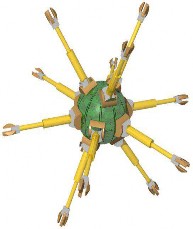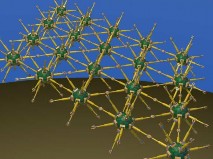61. UTILITY FOG-
♤ Utility Fog is a swarm of invisibly small molecular robots, programmable to rearrange into virtually any configuration, almost instantly. Utility Fog is basically a 'Fractal Robot', made up of trillions of smaller bots. As such, it is a form of self-reconfiguring modular robotics.

♤ Coined by Dr. John Storrs Hall in 1993, Hall thought of it as a nanotechnological replacement for car seatbelts. The robots would be microscopic, with extending arms reaching in several different directions, and could perform three-dimensional lattice reconfiguration. Grabbers at the ends of the arms would allow the robots (or foglets) to mechanically link to one another and share both information and energy, enabling them to act as a continuous substance with mechanical and optical properties that could be varied over a wide range. Each foglet would have substantial computing power, and would be able to communicate with its neighbors.

♤ Some of the basic properties of Utility Fog would be invisibility (when desired), strength, and enormous computing power. Molecular size means too small to see, and in low density formations (arms extended to maximum) it would flow easily as air. Speed.At molecular sizes, robots would move interactively at about the speed of sound, almost faster than we could see. The strength of a swarm of molecular sized robots would be amazing... if desired as hard as cement, and in unison could lift a truck with ease!



